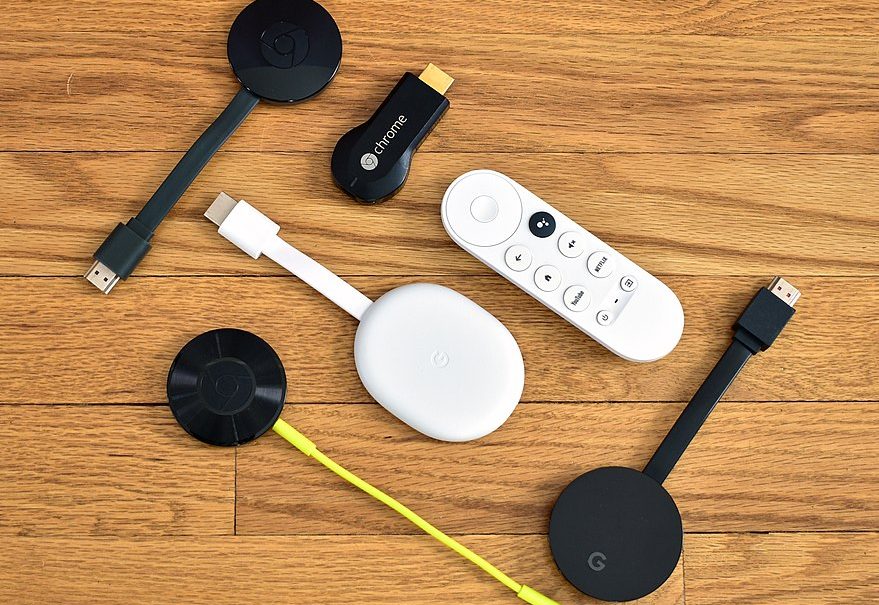In this post-video store world, streaming devices are the new mediums for home entertainment.
A streaming device is a small computer that connects a TV to the wider world of entertainment via the internet, allowing users to stream content from their favourite apps such as Amazon Prime, Netflix and BT Sport.
Most widescreen TVs sold these days include Smart TV capabilities, essentially a built-in streaming device, and you can sometimes find some of the best 32-inch Smart TVs with this capability.
But as you go down the model sizes, TVs become bereft of this feature.
For example, many 32-inch TVs with affordable price tags are not ‘Smart’ but remain highly popular for their middle-of-the-road stature and suitability to a bedroom.
For these TVs, a streaming device would be perfect.
There are many streaming devices out there to choose from, but each has its own set of pros and cons, so here is a breakdown of the most popular to guide your search.
Fire TV Stick
Pros:
• Incredibly easy setup – simply plug the Fire TV stick into the HDMI port of your TV, power it up and you’re good to go. The controller is also very accessible, with Alexa voice control to navigate around without even touching a button.
• This streaming device offers hi-resolution 4K capabilities – not so relevant on smaller-sized TVs but as you go up the size range this will indubitably benefit your watching experience.
Cons:
• While clever and capable, this streaming device does not offer the same utilitarian potential as others. For example, this device is restricted to TV use, while a Google Chromecast can link up with several devices including computers, phones and tablets.
Apple TV 4K
Pros:
• The Apple TV 4K supports an impressive 4K HDR display for ultra-HD entertainment, including its own Acarde platform – Apple Arcade – for powerful HD gaming, too.
• The Apple TV’s Airplay feature allows you to mirror your full phone or tablet screen onto your TV – great for taking your apps up to the next level.
Cons:
• At nearly £200, this is one of the most expensive streaming devices on the market. The Apple TV’s intelligence and capability are impressive but given how competent and capable other streaming devices are for a fraction of the price, it seems quite steep.
• The unit of the Apple TV 4k is enormous in comparison to the Chromecast or the Fire TV Stick. While the latter two can plug into a TV and inconspicuously hang behind it, the Apple TV will require a platform to sit on alongside the TV – inconvenient if the TV is mounted to a wall.
Chromecast with Google TV
Pros:
• Like the Apple TV, the Chromecast is capable of TV and entertainment streaming but is also designed to ‘cast’ images and videos between devices. For example, The Chromecast could be plugged into your TV and then a phone or tablet screen projected onto it through this streaming device.
• However, unlike the Apple TV, this gadget is only £60 and can hide very inconspicuously behind the television.
• Google Assistant integration is great for navigating through content or searching for your favourite shows
Cons:
• This would make a solid choice for a streaming device, but it will require a Google account to operate and may require auxiliary power depending on the type of TV
Roku
Pros:
• This is one of the most affordable streaming devices on the market, starting from just £19.99. Although cheap, this device is still packed with features, loaded with all your favourite video streaming services straight out of the box so you can start streaming immediately.
Cons:
• Unlike its closest rival, the Google Chromecast, this streaming device does not offer any casting or mirroring capabilities.
• While the Roku is loaded up with most popular streaming apps from the get-go, there are still some that aren’t available on this platform. For example, the official Twitch streaming app is not available to download, meaning that an old or unofficial Twitch app will need to be installed to enjoy this service.
Featured image credit: Y2kcrazyjoker4 via Wikimedia Commons under CC BY-SA 4.0 license

